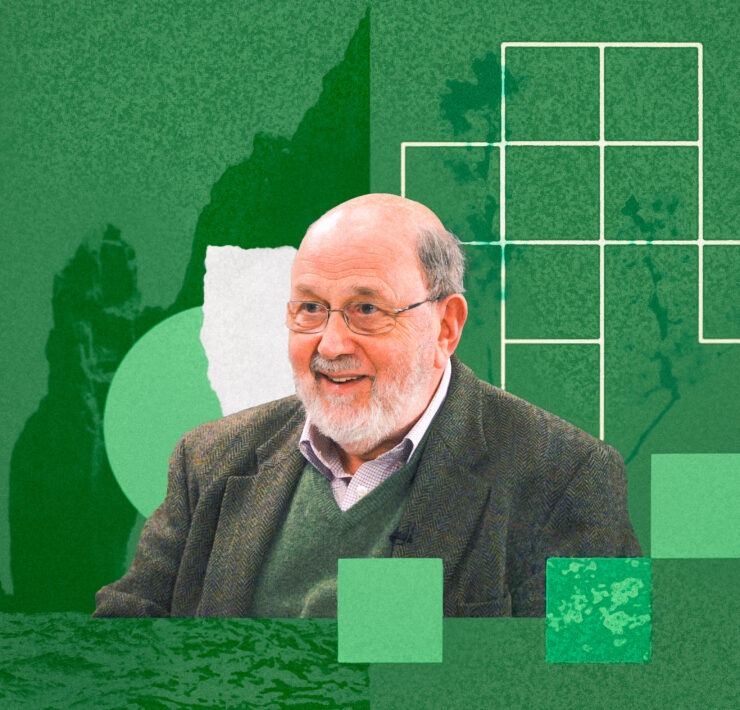When we enter the world, we know very little. But over time we learn about the world using several very different methods. We learn from authorities, such as teachers and parents; and from intuition, imagination, and insight; and from reasoning and logic. But those methods have some obvious potential drawbacks: authorities sometimes can be wrong; intuition can be based on incomplete information; reasoning can be unsound. But we’re fortunate to have another more reliable method of learning: experience.
We learn about the world with confidence primarily through experience. (In fact, science, one of the great human achievements, relies on repeatable and verifiable experiences.) When we interact with the natural world, we learn what is possible and what is typical in various situations. This learning serves as the foundation for what we call common sense.
One thing we learn is that natural objects sometimes can work together to enable a function. For example, twigs and leaves can come together — either intentionally or naturally — to serve as a dam in a stream. This is a static system: the parts don’t move.
But what about a dynamic system that has interrelated parts that move in a consistent way to enable a function? For example, a boxlike structure can be supported on one end by a stick, thus serving as an animal trap. This type of reliable system obviously can come about intentionally. But can it come about naturally?
How science confirms God’s existence
We humans have had innumerable experiences with natural objects and processes for 200,000 years or longer. And those experiences can be viewed as part of a grand scientific study, conducted (unwittingly) by the entire human race.
You’ll recall from high school (you were paying attention, weren’t you?) that a scientific study has these parts:
- observations of a thing or event or process, which lead to
- a hypothesis, a speculation about a part of the world, stated in such a way that it can be disconfirmed, which is followed by
- tests of the hypothesis via observations, experiences, and/or manipulation of variables, after which comes
- evaluation of the test results, which leads to
- conclusions and inferences
The hypothesis in this study is that random events — accidents — can produce dynamic systems (with interrelated moving parts) that have reliable functions.
The countless tests of the hypothesis have come in the form of actual experiences with nature, not from trusting authorities, intuition, or reasoning. The results of these unbiased tests have been consistently negative: in all conditions, with all types of people, over all time, the hypothesis has been disconfirmed. In other words, nature has never constructed dynamic systems with reliable functions—no tools, no instruments, no machines.
As with any scientific study that yields remarkably consistent results, we are justified in generalizing. We can conclude that no dynamic systems come about by accident, but instead require purposeful actions guided by creative intelligence. In other words, they come about by design. This natural law is no less valid than other natural laws that have been derived from repeatable and verifiable experiences.
Dynamic systems that have no human creator include the atom, the Earth-Moon system, the inner ear, and the Earth’s water cycle, to name just a few. To ignore the scientific conclusion of our very long-term study of the world, and insist that these dynamic systems, and all others throughout the universe, have come about by accident, would be intellectually dishonest and counterproductive.
And yet, according to many, we must unquestioningly believe that the entire universe assembled itself in just this way. Otherwise, we are superstitious or ignorant or “anti-science.” Yet we know with confidence that even simple dynamic systems with reliable functions do not come about by accident. If they did, then the Earth would be littered with dynamic systems of all sizes and complexities.
In light of the consistent results of the study that has gone on for 8,000 or more generations, we must once and for all dismiss the accident theory. It is no longer tenable. It’s time to follow the science and embrace the design theory. We have clear scientific confirmation that creative intelligence is evident in every dynamic system with a reliable function. Experience makes it clear that purposeless nature, with its random and destructive actions, lacks the means for producing such systems. Nature simply cannot do what a creator does—no matter how much time passes or how many random events occur.
People of faith have never doubted the Creator’s existence. They all have known what a psalmist eloquently stated about 3000 years ago: “The heavens declare the glory of God, and the sky above proclaims his handiwork.” But people of faith will no doubt welcome scientific confirmation of God, as it will bolster their understanding of the world.
Committed atheists have always denied the Creator’s existence, and instead have decided that Time and Chance are the true creators in a purposeless universe. They undoubtedly will not welcome the scientific confirmation of God. And they probably will continue to insist on the unjustifiable conclusion that all dynamic systems in nature have come about by accident. I have a feeling that such people simply are stuck with an inadequate image of God. Perhaps to them God is a mean-spirited despot, or an always-present policeman, or an impersonal CEO way up in the sky, or a capricious cosmic puppeteer. Such immature conceptions can make God seem unrealistic, and thereby make it hard to accept the scientific confirmation of God’s purposeful role in shaping nature’s dynamic systems.
Uncertain agnostics have always been hesitant to admit the Creator’s existence, perhaps because they are waiting for convincing and undeniable proof. Many, I’m sure, sincerely want to have the best possible understanding of the world (without relying on authority, intuition, or reasoning), and are thus open-minded. For them, the scientific confirmation of God should be welcome, eye-opening, and perhaps life-changing.























